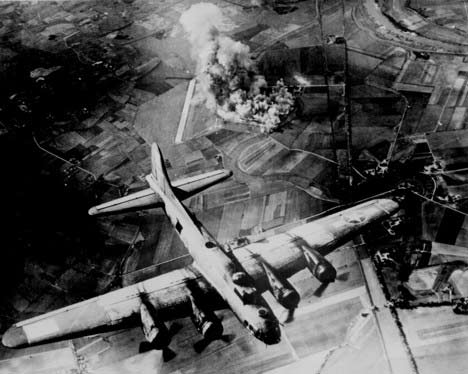 Introduction: Thank you: John Hart & Pres. Henry Hartman
Introduction: Thank you: John Hart & Pres. Henry Hartman
A. Personal
1. Activities: HAHS Co-Chair Museum Committee, Trustee w/ Eisenhower Society, EISE volunteer work, York County Literacy Council Adult Reading Program.
2. U.S. Army 1968 – 1971 D/E&MS and NCOIC “Sprint” ballistic missile program at the Dept of Defense.
B. Publishing
1. Ostfront Publications, LLC Why Normandy Was Won and a 2nd book in the finishing stages of MS preparation.
II. German Strategic Visionary Shortsightedness and Doctrinal Failure
A. The failure of the RLM (Reichluftministerium) to plan adequately for an extended war. The German concept of the war it wanted and planned to fight and could economically and militarily fight has been described as “Kurs und Vives” (short and quick).
1. German Great War economic recovery as well as its smaller industrial base, compared to its two chief opponents, U.S.A. and the U.S.S.R. put it at a military disadvantage in terms of productivity is concerned.
a. Because of the above reasons, Germany chose the path of quality design and production vis a vis one of mass production.
2. All of Germany’s potential enemies (1939/40: Poland, France, England and the border regions of the U.S.S.R.) were within range of the existing or planned twin-engined machines. The He-111H series, Ju-88A series and the Do-17 series of medium range bombers.
a. Ju-88A: Range 1,100 miles, bomb load: 4,400 lbs
b. Ordered in 1938, He177V-1 1st flight Nov ’39. Problem engines and necessary aerodynamic design changes slowed development. Initial mission January 1944.
c. Coupled engines: The Daimler-Benz DB606 24 cylinder in-line engine liquid cooled engines. The coupled engines, two DB601 engines mounted side by side w/ a single gear casing driving a common drive shaft
1. Engineering advantages: improved aerodynamics via less drag generated from 4 to 2 engine nacelles and improved maneuverability. Wing loading is improved with the engine weight closer to the center-line of the fuselage. The coupling of two reliable engines eliminated the time required to develop a new engine.
2. Surface evaporation cooling was replaced with conventional radiators as the extensive plumbing was prone to leakage and battle damage.
d. Engine problems
1. The coupled engines generated so much heat due to the proximity of each other they ran hot, so hot the crank case oil boiled and foamed and the engines overheated and frequently caught fire.
2. “Luftwaffefeuerzeug” Luftwaffe’s Lighter
3. Performance: Range: 1,962 miles, bomb load: 8,800 lbs.
b. He-111H: Range 1,200 miles, bomb load: 5,500 lbs.
c. Do-17Z: Range 720 miles max w/ aux. internal fuel tanks, bomb load: 2,200 lbs.
III. The War widens: The Atlantic Ocean and the Russian Urals
A. The United States and the U.S.S.R.
1. Japan attacks U.S.A. @ Pearl Harbor on 7 December 1941. Germany declares war on the U.S. on 12 December 1941 as part of Tripartite Pact with Italy, Japan.
2. Germany Invades the U.S.S.R. 22 June 1941.
3. With the failure of the Battle of Britain, Germany lost its platform to interdict Allied merchant convoys approaching from the U.S. and Canada.
a. Until the arrival of the 8th U.S.A.A.F. in late 1942, the R.A.F. would be Germany’s chief opponent in the air.
4. The staging of the KG (Kampf Gruppen) 400 miles further inland from Atlantic targets.
5. A long range aircraft is needed.
B. The multi-engined Machines: The Focke-Wulf Fw200C & the Heinkel He177A
1. The Focke-Wulf Fw-200C “Kondor”
a. Range: 2,260 miles, bomb load: 4,600 lbs.
Comparison: (B-17G range: 1,850 miles, bomb load: 8,000 lbs.) (B-24J: Range: 1,700 miles bomb load: 7,000 lbs.)
b. Problems: Fragile airframe, leading to structural failures on max load take-offs.
2. The Heinkel He177A “Grief”
a. Germany’s only war-time designed multi-engined bomber